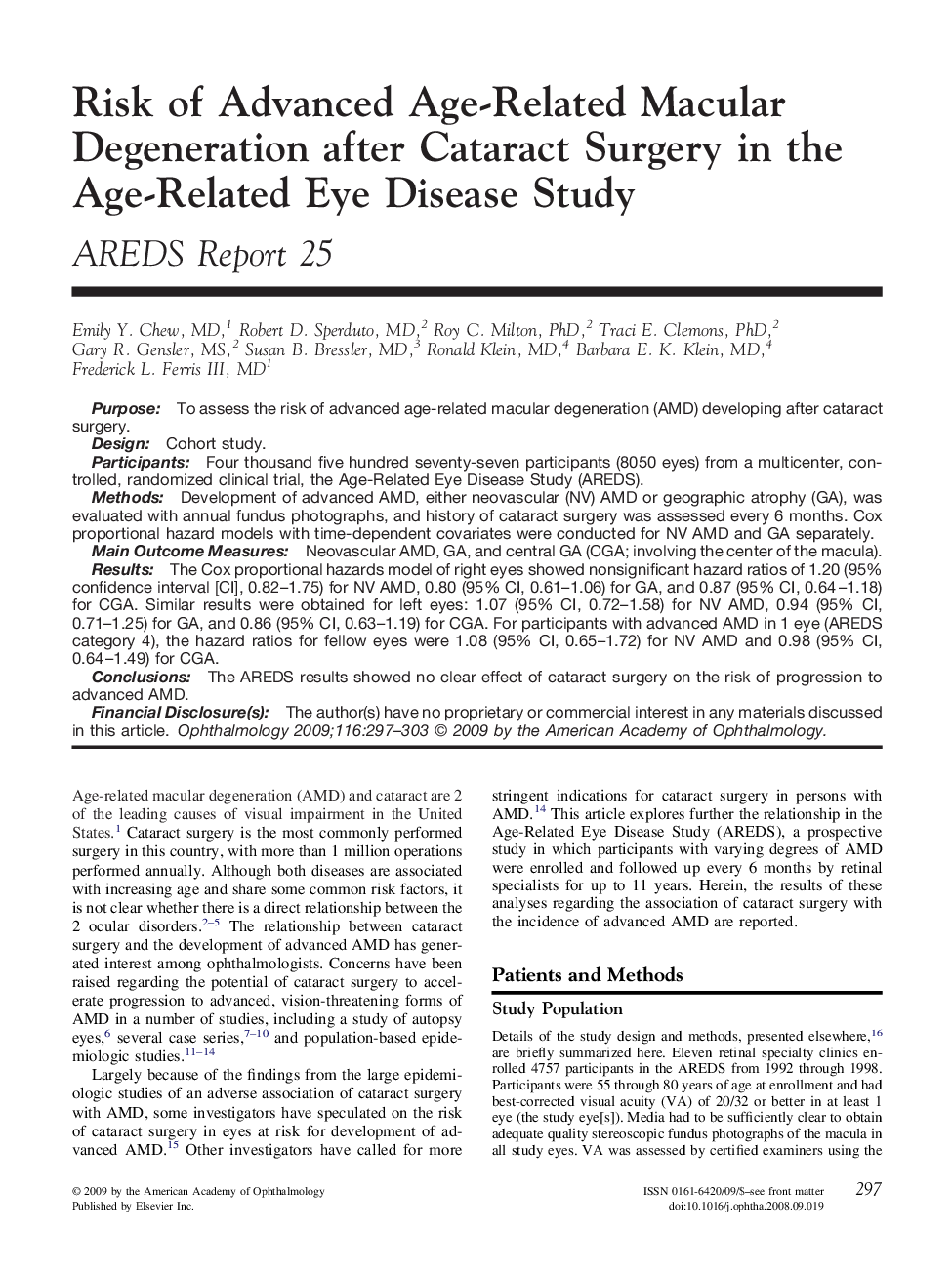| Article ID | Journal | Published Year | Pages | File Type |
|---|---|---|---|---|
| 4029261 | Ophthalmology | 2009 | 7 Pages |
PurposeTo assess the risk of advanced age-related macular degeneration (AMD) developing after cataract surgery.DesignCohort study.ParticipantsFour thousand five hundred seventy-seven participants (8050 eyes) from a multicenter, controlled, randomized clinical trial, the Age-Related Eye Disease Study (AREDS).MethodsDevelopment of advanced AMD, either neovascular (NV) AMD or geographic atrophy (GA), was evaluated with annual fundus photographs, and history of cataract surgery was assessed every 6 months. Cox proportional hazard models with time-dependent covariates were conducted for NV AMD and GA separately.Main Outcome MeasuresNeovascular AMD, GA, and central GA (CGA; involving the center of the macula).ResultsThe Cox proportional hazards model of right eyes showed nonsignificant hazard ratios of 1.20 (95% confidence interval [CI], 0.82–1.75) for NV AMD, 0.80 (95% CI, 0.61–1.06) for GA, and 0.87 (95% CI, 0.64–1.18) for CGA. Similar results were obtained for left eyes: 1.07 (95% CI, 0.72–1.58) for NV AMD, 0.94 (95% CI, 0.71–1.25) for GA, and 0.86 (95% CI, 0.63–1.19) for CGA. For participants with advanced AMD in 1 eye (AREDS category 4), the hazard ratios for fellow eyes were 1.08 (95% CI, 0.65–1.72) for NV AMD and 0.98 (95% CI, 0.64–1.49) for CGA.ConclusionsThe AREDS results showed no clear effect of cataract surgery on the risk of progression to advanced AMD.Financial Disclosure(s)The author(s) have no proprietary or commercial interest in any materials discussed in this article.
